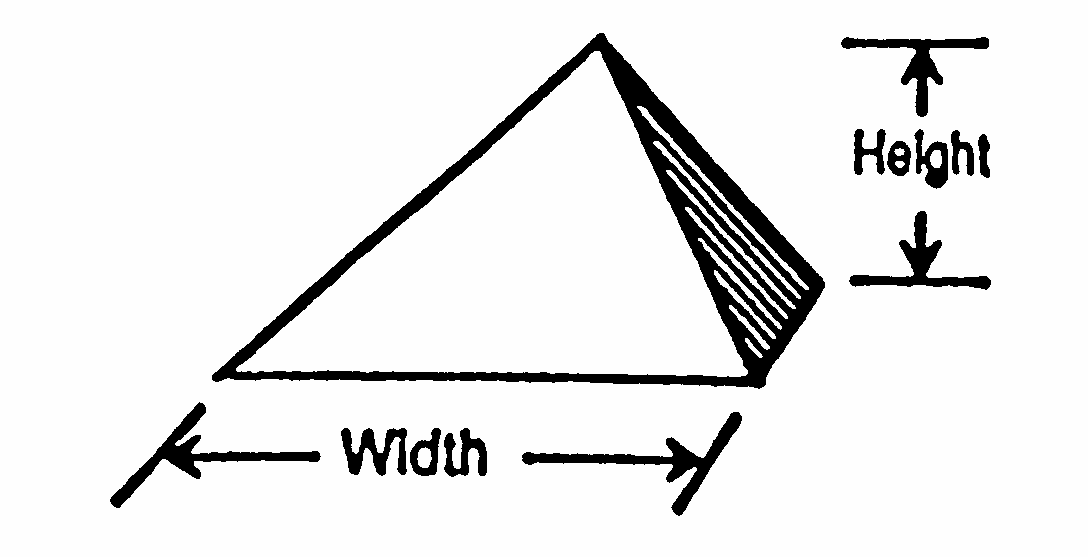 |
Orlando |
 |
Code of Ordinances |
 |
Chapter 64. SIGNS |
 |
Part 2. ON-SITE SIGNS |
 |
Appendix 2B. SIGN STANDARDS IN CERTAIN ZONING DISTRICTS |
§ 64.228. Signs Inside the Traditional City.
In order to ensure the perpetuation and enhancement of positive design characteristics in the Traditional City, signs shall be designed so their size and location are pedestrian-oriented. The standards allow for reasonable identification for existing buildings whose front yard setbacks preclude pedestrian-oriented signs. Standards also allow for reasonable identification for existing buildings when the adjacent principal building obstructs the visibility of pedestrian-oriented signs.
Only wall mounted, marquee, window, projecting and awning signs shall be permitted, except as follows:
(a)
Existing principal buildings with a front setback of 15 feet to 35 feet shall be permitted to locate one pole sign or one ground mounted sign between the principal building and the frontage street when either the adjacent principal building is located closer to the edge of the right-of-way by 15 feet or more, or the adjacent building site is vacant. (See Exhibit B.)
Ground sign maximum height:
MU-1t and ACt districts: 6 ft.
MU-2t district: 8 ft.
Pole sign maximum height: 18 ft.
(b)
Existing principal buildings with a front yard setback greater than 35 feet shall be permitted to have one ground mounted sign or one pole sign located between the building and the frontage street. (See Exhibit B.)
Ground sign maximum height:
MU-1t and ACt districts: 6 ft.
MU-2t district: 8 ft.
Pole sign maximum height: 18 ft.
(c)
Shopping Centers, buildings in single ownership occupied by more than one use, or groups of buildings sharing off-street parking facilities shall be permitted one pole sign not over 18 feet in height or one ground sign not over 6 feet in height in the MU-1 and AC districts or 8 feet in height in the MU-2 district. Such signs may be facing or perpendicular to each street on which the building or group of buildings fronts. In addition, not more than one wall, marquee, window, awning or projecting sign for each business site shall be permitted. The limit on signs attached to the shopping center buildings applies only with a pole or ground sign present. Such signs shall conform to the requirements of Section 64.256 for square footage as for shopping center signs.
(d)
Street art signs, which shall be defined as any freestanding, three-dimensional, inanimate object that is not merchandise, and is used to attract the attention of potential customers, shall be permitted in all MU, AC, and I zoning districts by meeting the following standards:
1.
Street art shall be counted toward the maximum allowable copy area; the square footage of the street art shall be calculated by multiplying the greatest width by the greatest height of the object. See as Figure "C."

FIGURE C
2.
One piece of street art shall be allowed per street address. A minimum storefront width of 20 feet is required to be permitted street art.
3.
The street art shall not encroach into the right-of-way more than two feet and shall not be placed in the right-of-way without an encroachment permit as required by Chapter 61. Street art shall not be secured to the tree guards or tree grates or disturb the sidewalk pavement within the right-of-way.
4.
Street art shall be removed at the end of the business day.
5.
Street art shall be located in the front of the business and address named on the sign permit and advertise that business exclusively.
6.
In districts where menu boards are allowed, the applicant may have one street art piece or a menu board, but not both.
(e)
Streetwall signs may be incorporated into a streetwall as described by Section 62.611 and 62.620 of the LDC. Streetwall sign types are as follows:
1.
A streetwall sign may be mounted on top of the streetwall either parallel or perpendicular to the street. The streetwall shall serve as the structural base of the sign. The streetwall sign maximum height shall be 6 feet from the ground level to the top of the sign, and a maximum width of 5 feet. Streetwall signs shall be spaced a minimum of 60 feet apart.
2.
A streetwall sign that spans a pedestrian or vehicular site entrance may be structurally tied into the streetwall on one or two supports. A streetwall sign over a pedestrian entrance shall have a 7 foot minimum clearance to the bottom of the sign, and a maximum height of 12 feet measured from ground level. A streetwall sign over a vehicular entrance shall have a minimum clearance of 14 feet to the bottom of the sign, unless approved otherwise by the City Transportation Engineer, and a maximum height of 18 feet measured from ground level.
(Ord. of 9-16-1991, Doc. #25101; Ord. of 4-20-1992, Doc. #25637; Ord. of 2-21-1994, Doc. #27277)